Repotting season has mostly wrapped up in Northern California. Once trees start to grow in spring, repotting can slow or even stop new growth. I repotted the hornbeam below ahead of Bay Island Bonsai’s 12th annual exhibit this past January. I wrote previously about cutting back the branches and displaying the tree at the exhibit – today I’ll describe the repotting.

Repotting tools
I hadn’t planned to repot the tree at all. Last year I planted it in a large container to encourage vigorous growth over the following two to three years as the tree’s ramification is still under development. Having decided, at the last minute, to show the tree, I needed a more appropriate pot. Fortunately, a Raho pot I’d carried back from Japan appeared to be a good fit.
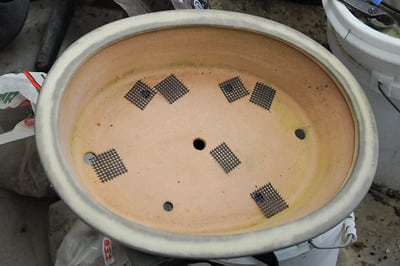
Screen for drainage holes
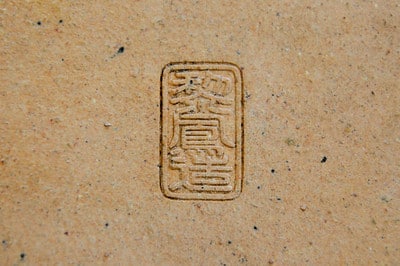
Chop – “Raho”
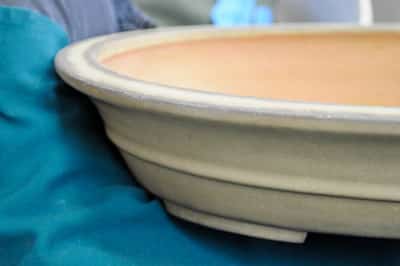
Note patina on the rim of the pot
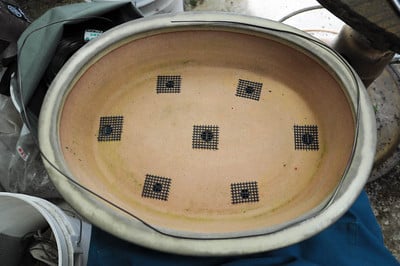
Measuring the tie-down wires
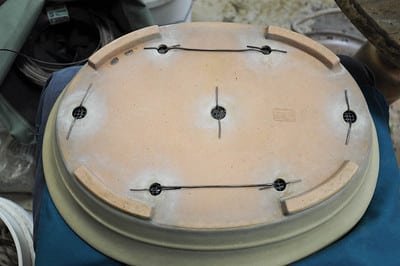
Tree-ready pot
We repot bonsai to keep them healthy as much as to change pots when the occasion merits. This means I focus on the health of the tree whenever I work on the roots. As hornbeam roots grow relatively slowly, I didn’t remove as many roots as I would for a trident or Japanese maple at a similar stage of development.
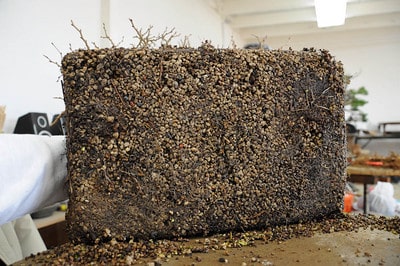
After removing the rootball from the pot
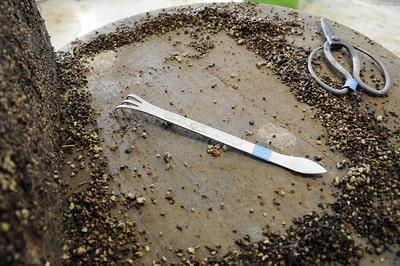
The little rake used for combing out the bottom of the rootball
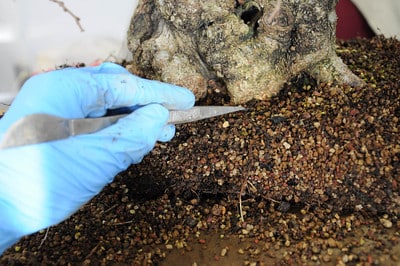
Combing out the surface roots with bent-nose tweezers
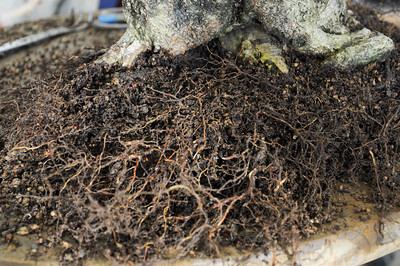
Roots combed out
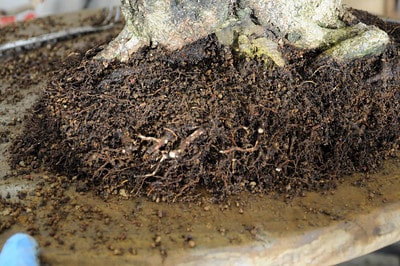
After trimming long roots
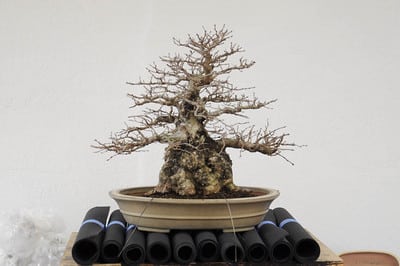
Checking to see if the rootball fits in the pot
Repotting is also a great time to improve the nebari. A large root in the back of this hornbeam had bothered me since I acquired the tree. After this repotting, it would bother me no more.
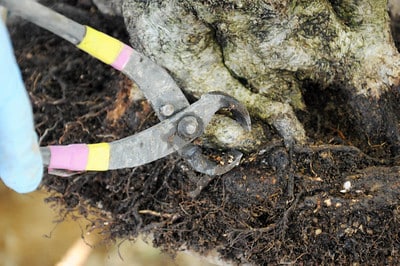
Removing a large root
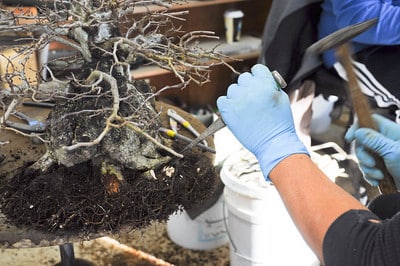
Further reducing the wood where the large root was removed
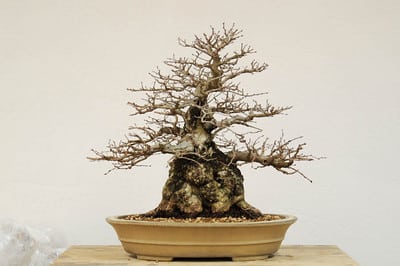
Repotting complete
The reward for successfully repotting a bonsai is the vigor with which the tree comes out in spring. The health of the tree and the weather play large roles here too – this year everything seemed to come together and I’m already seeing up to a dozen leaves on new shoots.
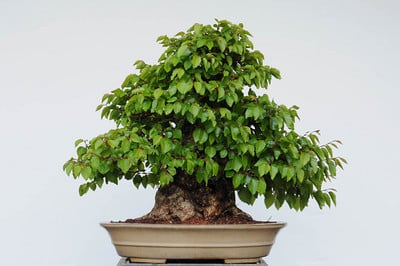
Nice and healthy – spring 2011
In a few weeks I’ll begin cutting back new growth to allow light and air to visit upon the interior shoots. As the ramification improves, I’ll spend more and more time maintaining the silhouette. And if all goes well, I’ll have the tree I’m aiming for in another 5-10 years.
Subscribe to Bonsai Tonight
New Posts Delivered Every Tuesday and Friday
Albert W says
man that is a fat trunk with some killer taper. Post some more deciduous trees if you have the time jonas.
John many says
Is the Korean Horbeam suitable for Michigan climate?
xwires says
Hi John – as far as I know, hornbeam can do well in Michigan provided they receive some protection in winter.
Gary Swiech says
I grow Carpinus japonica here in central Wisconsin. I have never had any problems with hardiness, although I do give them Winter protection at in my garage shelter after a few good freezes at 28º F or so. It seems to have hardy roots.
Gary Swiech says
Woops, Korean Hornbeam! Yes, I grow Carpinus turczniinowii – the rock hornbeam or Korean hornbeam also. With the same winter protection.
gaycarboys says
Stunning tree as it is. You inspired me and I thought of you today when I spotted a couple of little advanced trees at my bonsai nursery. I got a couple of them and should have a few nice 10″ trees out of it and its the right time of the year to repot. I took some advice from my bonsai guru and will prune and shape and a light root prune but keep them in the black plastic pots. I hate black pots but there you go I guess. I should get a wriggle on if I’m going to have noce trees by the time i”m 60 LOL